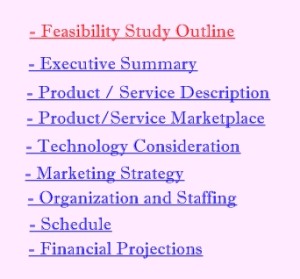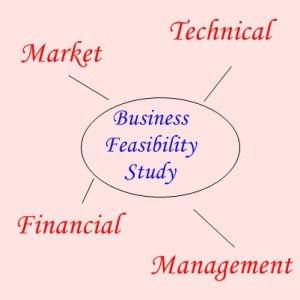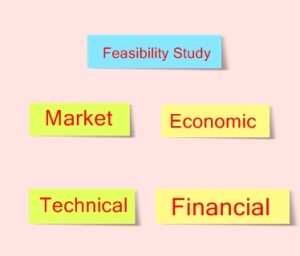I. Executive Summary
This section is very important part of the feasibility study because it provides summary of the detailed contained within the rest of the document.
II. Description of Products and Services
This section provides description of the product and/or services. It should capture the important aspects of the products and/or services that the organization or the shareholders is considering.
III. Technology Consideration
This section explain that the organization consider with regard to technology. Nowadays, modern technology have been used to businesses to improved their products and services.

IV. Product/Service Marketplace
This part will describes the existing marketplace for the products and/or services including the target market for this product or services, competitor, suppliers and the reason why your client or customer choose your products or services.
V. Marketing Strategy
This section provides description on how the products or services will market such as how to promote and advertise it to the prospective client or customer. Marketing plans should be focused on the right target groups to yield the greatest return on investment.
VI. Organization and Staffing
This section will enumerate the need for additional staffing or personnel for the new products or services.
VII. Schedule
This part includes the schedule for the implementation of the product or services including the detailed schedule such as the product planning. It includes some targeted milestones and time frames for completion.
VIII. Financial Projections
This section provides the description of the financial projections for the new products and/or services such as the cost-benefit calculation, projected income statement, balance sheets. It also provides the assumptions on which the illustrated financial projection are based.
IX. Findings and Recommendation
This section provides the summary of the findings of the feasibility study and explains why some course of action is or is not recommended such as the advantages and disadvantages. Also, it contains the recommendation for the products and/or services.

